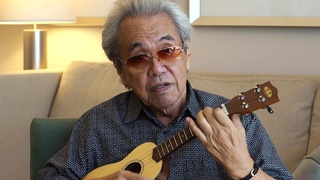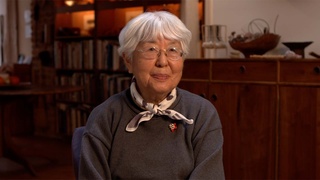Interviews
Grandfather's interrogations during World War II
It was clearly to me like most of the incarceration it was economics. He was a business leader and the Kibei thing was a huge part of it, the fact that he was educated there. I think there was also some confusion whether was he was Issei or Nisei because of that, in coming back to Hawaii from Japan because after Sand Island (and he spent several weeks there), they sent him on a tour of US Army Interrogation centers. I think he went to Wisconsin, Louisiana, somewhere in Arizona, before he came back to Hawaii.
Nobody never said anything about that, the only thing I remember my grandmother saying was that he came back thirty pounds lighter then when he left. And again these were interrogations. I’m sure they woke him up in the middle of the night, the whole bit, trying to figure out something, some tie to Japan. Anyway when he came back in Hawaii, later in the year of ’42, probably October/November, he told my grandmother that “for certain they’re gonna send me back to one of these concentration camps because they still considered me a threat.”
Date: April 25, 2018
Location: California, US
Interviewer: John Esaki
Contributed by: Watase Media Arts Center, Japanese American National Museum
Explore More Videos



Camouflage Net Weaving in Manzanar
Japanese American animator for Walt Disney and Hanna Barbera (1925-2007)

Developing Art Skills in Camp
Japanese American animator for Walt Disney and Hanna Barbera (1925-2007)

Return to Los Angeles
Japanese American animator for Walt Disney and Hanna Barbera (1925-2007)

Trip to Japan as a Boy Scout
(b. 1938) Japanese Peruvian incarcerated in Crystal City


Leaving Topaz
(1914–2015) Nisei YMCA and Japanese American community leader

Leaving a camp to attend college
(1914–2015) Nisei YMCA and Japanese American community leader

Learning Japanese to speak to relatives in Japan
(b. 1924) Hairdresser. Incarcerated at Poston, Arizona.


Keeping Japanese Performance Arts Alive in the Camps
(b. 1932) Nisei American stage, film, and TV actress

The Emotional Toll of Being Incarcerated in Camp during World War II
(b. 1932) Nisei American stage, film, and TV actress

Sister’s Trauma from being Incarcerated during World War II
(b. 1932) Nisei American stage, film, and TV actress

His family Traveled to Japan in 1940
(b. 1938) Japanese American. Hiroshima atomic bomb survivor
